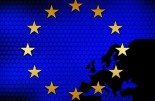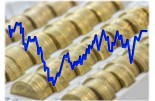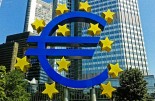NN IP: New ECB strategy is unlikely to be sufficient to re-anchor inflation expectations
NN IP: New ECB strategy is unlikely to be sufficient to re-anchor inflation expectations

Last week, the European Central Bank presented the results of its 18-month-long strategy review. Willem Verhagen, Senior Economist, Multi-Asset at NN Investment Partners comments:
'Faced with low equilibrium yields, policy rates stuck at the zero lower bound and inflation expectations even further below target than in the US, the bank made a slightly dovish shift by deeming inflation undershoots just as undesirable as overshoots. Despite this shift to a more symmetric target, we see little credible commitment in the new wording.
The rules of the game require occasional maintenance
Economic behaviour does not take place in a vacuum. Rather, it is determined by a range of institutions that set out “the rules of the game” – laws and conventions that economic agents believe will be enforced and followed by all other agents. The rules need to be clear, and any changes to them should be made rarely and flagged well in advance. Occasional changes are inevitable because the rules are essentially the result of a confrontation between social preferences and our understanding of the economic environment, both of which change over time.
The rules of the game for monetary policy are laid down in the central bank’s monetary policy strategy. As the bare minimum, this strategy should spell out the goals of monetary policy (such as price stability and full employment), how these goals are operationalized (which inflation measure is targeted or how full employment is interpreted), the instruments at the central bank’s disposal, and the mechanisms through which these instruments are believed to influence growth, employment and inflation.
In September the US Federal Reserve completed a review of its strategy. The most important outcome was a significant shift in its inflation goal posts. Instead of a symmetric 2% inflation target irrespective of past inflation levels, the Fed is now seeking to compensate for past inflation undershoots by allowing inflation to overshoot moderately for some time. In addition, the Fed is no longer seeking to correct deviations, but rather shortfalls, from the goal of full employment. If the economy is believed to be above full employment, the Fed will not take action unless inflation expectations are increasing.
The Fed’s change of strategy was a response to structurally low equilibrium yields and a policy rate that has been stuck at the zero lower bound for much of the past decade. Such conditions impede the Fed’s ability to stimulate the economy in a downturn; over time, this could cause inflation expectations to drift lower. The Fed is compensating for this by being structurally more dovish during the current expansion. Social concern about rising inequality also played a role in the Fed’s new interpretation of its employment mandate.
The European Central Bank faces the same kind of environment as the Fed, and with inflation expectations that have fallen considerably further below their target than in the US. With this in mind, the bank launched its own strategy review in January 2020 and presented the outcome last week. In an ideal world, the ECB would match or even exceed the Fed’s strategic dovishness. However, in the real world, the ECB is bound by internal and external political constraints. The result was a marginally dovish strategy change that is not likely to be sufficient to re-anchor inflation expectations from below.
A symmetric 2% inflation target that is open to interpretation
After its last strategic review in 2003 the ECB adopted an inflation target of “below 2% but close to it”. This gave the markets the impression that 2% was more of a ceiling than a target, and that overshoots were more undesirable than undershoots. Such a perceived asymmetry can be a factor in pushing inflation expectations down. This is probably why the ECB has now adopted a symmetric 2% inflation target, with positive and negative deviations deemed to be equally undesirable. This is surely a step in the right direction, but a much smaller step than the Fed took.
The ECB clarified that a policy rate close to the lower bound requires “especially forceful or persistent monetary policy measures to avoid negative deviations from the inflation target becoming entrenched”. One could argue that this is exactly what the ECB has been doing since Mario Draghi initiated quantitative easing (QE) in 2015 as it has eased policy significantly since then. Hence, the only real innovation came in the phrase “This may also imply a transitory period in which inflation is moderately above target”. This seems to be a step in the direction of how the Fed is allowing overshooting. The question is how big this step is. We suspect that the hawks and doves within the ECB would give very different answers to it.
The hawks interpret the sentence as meaning that an accidental inflation overshoot would not require policy tightening as long as there are strong indications that the overshoot is temporary. For them, there is nothing new here because the ECB never responds to one-off inflation events. Bundesbank President Jens Weidmann, a known hawk, even stated that explicitly aiming for an inflation overshoot would suggest to investors that the ECB believes sovereign debt sustainability is more important than price stability. This could, he believes, cause inflation expectations to increase. By contrast, the doves probably feel that the door is now open to explicitly aiming for a moderate inflation overshoot when the economy is trapped close to the lower bound. They would argue that raising inflation expectations from the below-target levels at which they have become entrenched is exactly what the ECB should seek to achieve. As such they are quite closely in line with current Fed thinking.
In short, there is no credible commitment embedded in the ECB’s phrase about a transitory inflation overshoot. As such, we believe it will do very little to lift inflation expectations. Neither do other aspects of the strategic review seem particularly helpful in this respect. For instance, the ECB has decided to include the cost of home ownership in its inflation measure. While this can be defended on economic grounds, it would probably have pushed core inflation up by around 0.2 percentage points over the past few years. This happens to be exactly the amount by which the inflation target was raised.
The route towards higher inflation remains unclear
The review failed to tackle the all-important question in many investors’ minds: how does the ECB plan to meet its new inflation objective? Over the past decade the ECB has systematically overestimated inflation, and low inflation has become entrenched despite massive and persistent policy easing. This raises questions about the effectiveness of monetary policy in an environment in which yields are already very low. At the most basic level, the answer is that in this environment fiscal policy must play a major role in re-anchoring inflation expectations from below. Monetary policy should support this endeavour through a commitment to keep sovereign yields low for a long time. Once inflation expectations and equilibrium yields have increased, monetary policy will become more effective again. This will mean it can take back control of the management of the economy.
While several ECB officials have hinted at this answer verbally, incorporating it into the strategic review is probably a step too far for the hawks. This is because it implies that the ECB will be involved in some form of soft yield curve (and sovereign spread) control for some time. The hawks agreed to this during the Covid crisis, but they want to exit these emergency measures as soon as possible. Most of the focus in this respect will be on the pandemic emergency purchase programme (PEPP), which is set to expire in March 2022. One big question is which flexibilities built into the PEPP – such as the ability to temporarily deviate from the capital key, and the waiver of issuer and issuance limits – will be transferred into the ECB’s regular instrument toolkit. Another question is whether the strategic review will lead to a change in QE and rate guidance, which contains a stronger commitment not to tighten policy until the ECB is close to seeing the whites of the eyes of inflation.
From all of this we can draw two conclusions. First, the real battle between the hawks and the doves about the extent to which monetary policy will remain loose for longer still lies ahead of us, and its outcome remains uncertain. Second, whoever wins this battle, European inflation expectations will depend much more on fiscal policy in the years ahead. On this topic too we can expect lively discussions between those who advocate a return to austerity and those who see a more permanent active role in supporting the economy.'









